Portable ultrasonic thickness gauge can measure pipes, steel plates, aluminum plates, plastics, iron pipes, PVC pipes, glass, etc. It comes with a 1mm~100mm measuring range with the standard probe, 0.1mm or 0.001 inches resolution, 1000~9999m/s (0.0394 to 0.3937in/μs) material velocity range. The handheld ultrasonic thickness meter is extremely suitable for measuring the thickness loss of pipes and pressure vessels after corrosion.
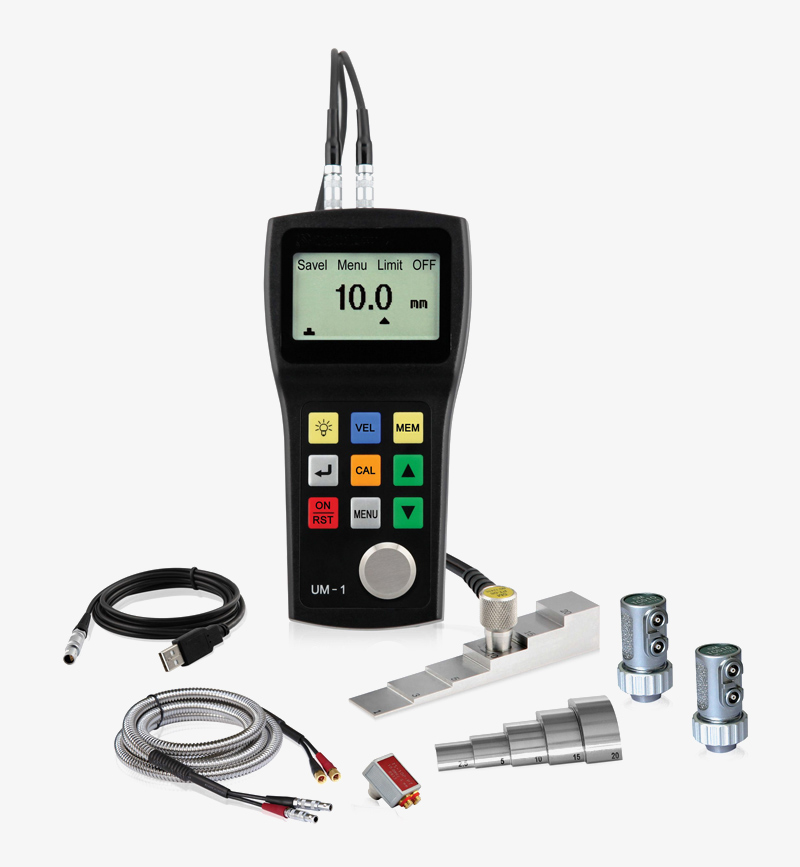
Portable ultrasonic thickness gauge can directly measure the material's thickness.
- 0.1mm or 0.001 inches resolution
- Measuring range: 0.8~300mm
- 128*64 pixels display with backlit
- Can store 500 thickness readings
- Hi-Low alarm setting
- Minimum thickness capture
- V-sound path correction
- With through paint/coating function (SISCO-UM-1D only)
Applications
sisco portable ultrasonic thickness gauges are used to measure metallic and non-metallic materials, including plastic, steel, PVC and glass plates and pipes. It can be widely used in manufacturing, metal processing and other fields, and can also perform corrosion and thinning detection on various pipes and pressure vessels in manufacturing facilities.
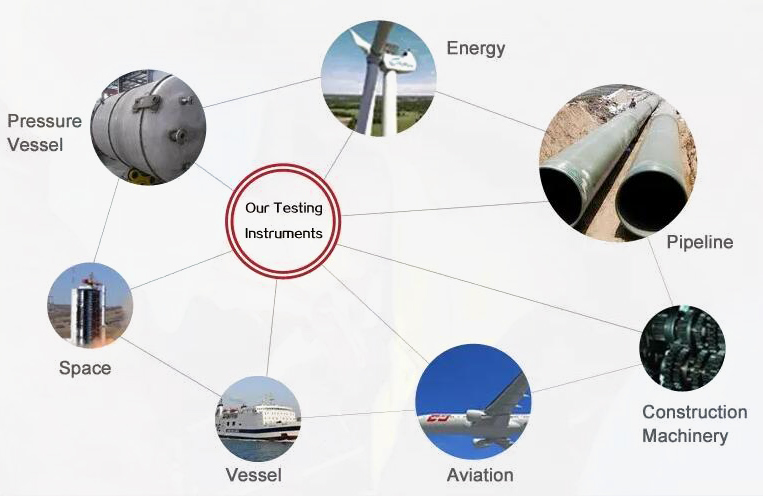
| Model | SISCO-UM-1 | SISCO-UM-1D |
| Display Type | 128 ×64 dot-matrix LCD screen with EL backlight | |
| Operating Principle | P-E (pulse-echo) with a dual-crystal probe | P-E (pulse-echo), E-E (Echo-Echo) with a dual-crystal probe |
| Total Measuring Range | 0.8mm-300mm, depending on the material and probe | |
| Measuring Range in Standard Mode | Standard Probe PT-08: 0.8mm-100mm |
|
| Measuring Range in Thru Coating Mode | N/A | 3-20mm with PT-08 probe |
| Measuring Limits of Tube (Steel) | Φ20mm×3.0mm (PT-08 probe) The measuring error is up to ± 0.1mm. |
|
| Measuring Error | Lower limit to 10mm: ±0.1mm 10mm to upper limit: ±(1%H+0.1)mm Note: H is the actual thickness of the tested material |
|
| Repeatability | 0.1mm | |
| Display Resolution | 0.1mm or 0.001 inch | |
| Units | Inch or Millimeter | |
| Calibration Method | Zero calibration, Two-point calibration | |
| V-Path Correction | Automatic | |
| Update Rate | 4Hz | |
| Material Velocity Range | 1000~9999m/s (0.0394 to 0.3937in/μs) | |
| Memory Function | 5 arrays are divided to store 500 thickness values | |
| Minimum Value Checking | Taking the probe to move along the surface of the tested material, the gauge is able to find the thinnest point automatically. | |
| Warning Function | If the measured value exceeds the pre-set thickness limit, the gauge will sound an alarm. | |
| Velocity Storage | Can store 5 different materials' velocities in total | |
| Languages | English and Chinese | |
| Communication Port (Optional) | USB port or Serial RS 232 port | |
| Application Software (Optional) | UmView Software for data transmission, storage, analysis and document editing | |
| Power Supply | Two 1.5V AA alkaline batteries (Alarm for low battery voltage) | |
| Operating Time | Up to 200 hours with alkaline batteries (without backlight) | |
| Instrument Shut-off | AUTO OFF after 5 minutes of no operation | |
| Operating Temperature | -10℃ ~ +50℃ | |
| Size | 149mm×73mm×32mm (H×W×D) | |
| Weight | 210g including batteries | |
Note:
* Standard Packing List
Ultrasonic Thickness Gauge×1, Standard Probe×1, Battery×2, Couplant×1, Carrying Case×1, Operating Manual×1
(Kindly Reminder: Battery and Couplant are Not Included if Shipped By Air.)
** Optional Probes
| Model | PT08 | PT06 | PT04 | ZT12 | GT12 |
| Type | Standard | Small Tube | Fingertipe | Cast iron | High-Temperature |
| Frequency | 5MHz | 7.5MHz | 10MHz | 2MHz | 5MHz |
| Diameter | 11mm | 8mm | 6mm | 17mm | 15mm |
| Measuring Range | 0.8~100mm | 0.8~30mm | 0.7~12mm | 4.0~508mm | 4.0~80mm |
| Allowable Temperature | -10℃ ~ 70℃ | -10℃ ~ 70℃ | -10℃ ~ 70℃ | -10℃ ~ 70℃ | -20℃ ~ 450℃ |
| Picture | 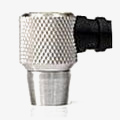 |
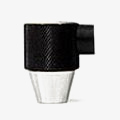 |
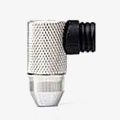 |
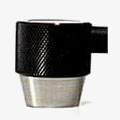 |
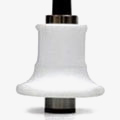 |
Function Comparison
| Model | SISCO-UM-1 | SISCO-UM-1D | SISCO-UM-2 | SISCO-UM-2D |
| Operating Principle | P-E (pulse-echo) | P-E (pulse-echo), E-E (Echo-Echo) | P-E (pulse-echo) | P-E (pulse-echo), E-E (Echo-Echo) |
| Measuring Range in Standard Mode | 0.8mm-300mm, depending on the material and probe | |||
| Measuring Range in Thru Coating Mode | N/A | 3-20mm | N/A | 3-20mm |
| Measuring Resolution | 0.1mm, 0.001 inch | 0.1mm, 0.001 inch | 0.01mm, 0.0001 inch | 0.01mm, 0.0001 inch |
| Probe Compensation Line | 1 built-in probe compensation line | 1 built-in probe compensation line | 7 built-in probe compensation line | 7 built-in probe compensation line |
| Data Logger | Y | Y | Y | Y |
Q1: What is an ultrasonic thickness gauge?
The ultrasonic thickness gauge is improved based on the principle of ultrasonic measurement. It can measure the thickness of metals and other materials and can measure the sound speed of the material. The sisco ultrasonic thickness gauge is a portable thickness meter that can measure the thickness of various pipes and pressure vessels in production equipment, as well as accurately measure various sheets and machined parts.
Q2: How does an ultrasonic thickness gauge work?
sisco ultrasonic thickness gauge offers through-coating thickness measuring capability. It measures the thickness of an object by precisely calculating the times the probe sends an ultrasonic pulse to the object and passes through the object until the probe receives the reflection from the boundary. The ultrasonic pipe thickness gauge adopts the most advanced microprocessor and ultrasonic technology and has the characteristics of zero drift, reliable and stable reading, and no need for zero calibration. You can now test painted objects without removing paint or correcting paint thickness.
Q3: 4 Measurement methods of ultrasound thickness gauge
- Single-point measurement method: It means that the ultrasound thickness gauge is used to measure any point of the measured material with a probe, and the display value is the thickness value.
- Two-point measurement method: The ultrasound thickness meter is used to make two measurements at the same point of the measured material with a probe. In the second measurement, the probe's split surface is 90 degrees, and the smaller value in the two measurements is the thickness value.
- Multi-point measurement method: When the measurement value is unstable, take a measuring point as the center and make multiple measurements in a circle with a diameter of about 30 mm. The minimum value is the thickness value.
- Continuous measurement method: It uses a single-point measurement method to measure continuously along a designated line with an interval of not less than 5 mm. The minimum value is the thickness value.
Tips: What affects the accuracy of an ultrasonic thickness gauge?
- Sound speed. For occasions where the requirements for measurement results are not high, the speed of sound found from various data can be used for measurement, but the speed of sound found from various data is often significantly different from the actual sound speed of the material. The accurate measurement method is to take a standard sample that is exactly the same as the material to be tested. The standard sample is required to be flat and smooth, and the same thickness as the maximum thickness of the tested sample to determine the sound velocity of the material.
- Ultrasonic thickness gauges probe selection. In general, the sound velocity in solid material decreases with the increase in temperature, so a special probe for a high-temperature sample should be used. When an ultrasonic wave passes through the casting and austenitic steel, the scattering attenuation will be serious due to the uneven structure or the bulky grain, which may make the echo obliteration, resulting in no display. Therefore, it is recommended to choose the coarse crystal special probe with a lower frequency (2.5 MHz). The radius of curvature of the workpiece is too small, especially when measuring the thickness of a small-diameter tube. Since the surface of the probe is usually flat and the contact with the surface is point contact or line contact, the transmission of sound intensity is low (the coupling is not good), the special probe with a small diameter can be selected (6mm).
- Ultrasonic thickness gauge calibration. Both the probe and the circuit have a certain signal transmission time, which must be subtracted from the total transmission time. This process is called instrument calibration. Ignoring this step will cause a large error in the measurement result. During calibration, press the calibration key of the ultrasonic thickness gauge, apply a little couplant to the probe and lightly press it on the calibration test block that comes with the instrument. When the instrument displays the thickness value of the standard test block indicated in the manual, the calibration is completed. After replacing the battery and probe of the ultrasonic thickness gauge, and before each measurement, it should be calibrated.
Thank you for buying industrial test and measurement equipment on SISCO.com, all products sold by SISCO and the partner cover a 12 months warranty, effective from the date of receiving the products.
What is covered?
SISCO is responsible for providing free spare parts, and free technical support to assist the customer to repair the defective products until the problem is solved.
What is not covered?
- Product purchased from anyone other than a SISCO store or a SISCO authorized reseller.
- Expendable parts.
- Routine cleaning or normal cosmetic and mechanical wear.
- Damage from misuse, abuse or neglect.
- Damage from use of parts other than SISCO approved.
- Damage from use outside the product’s usage or storage parameters.
- Damage from use of parts not sold by SISCO.
- Damage from modification or incorporation into other products.
- Damage from repair or replacement of warranted parts by a service provider other than a SISCO authorized service provider.
- Damage caused by the application environment not meeting the product usage requirements and the failure to perform preventive maintenance.

